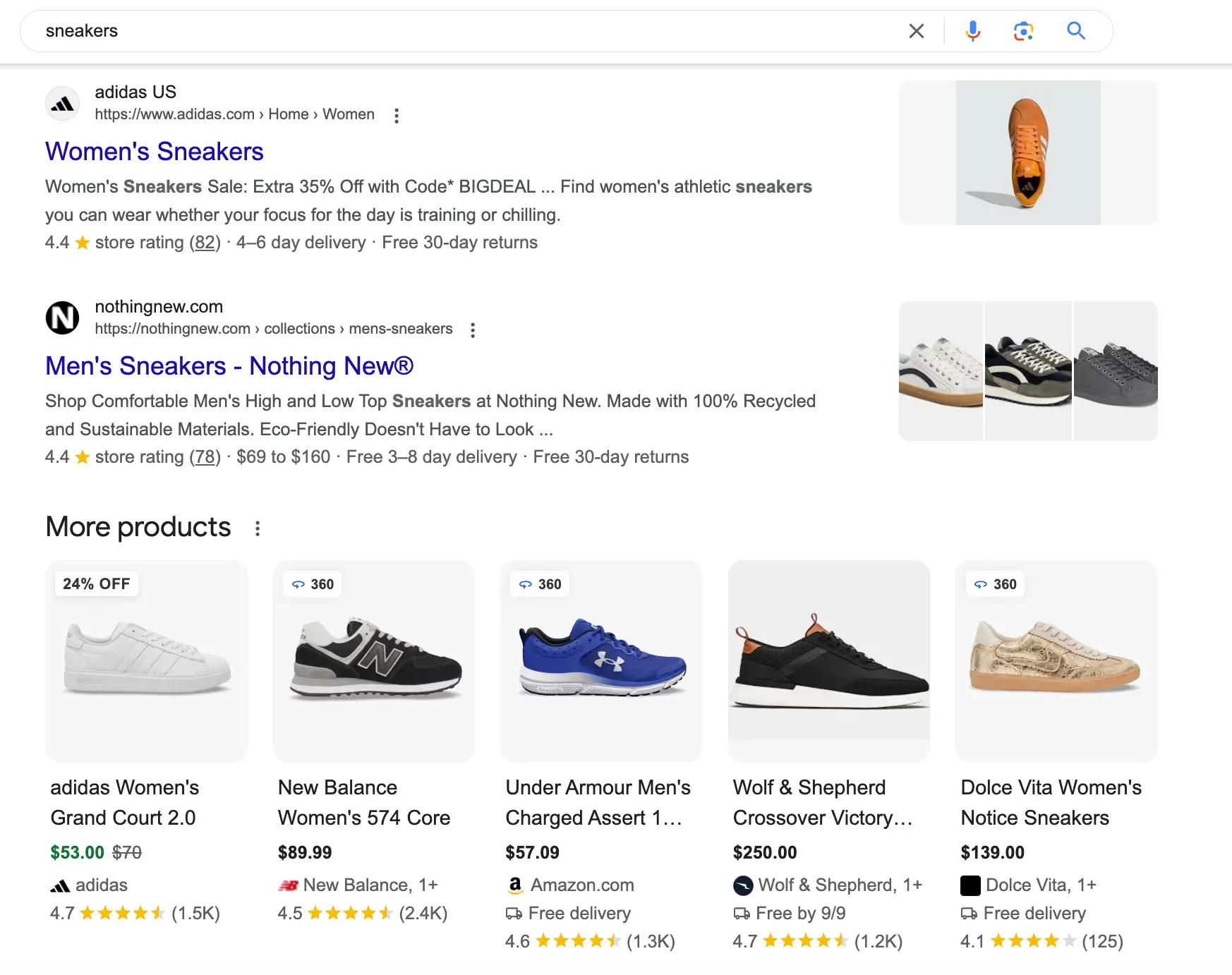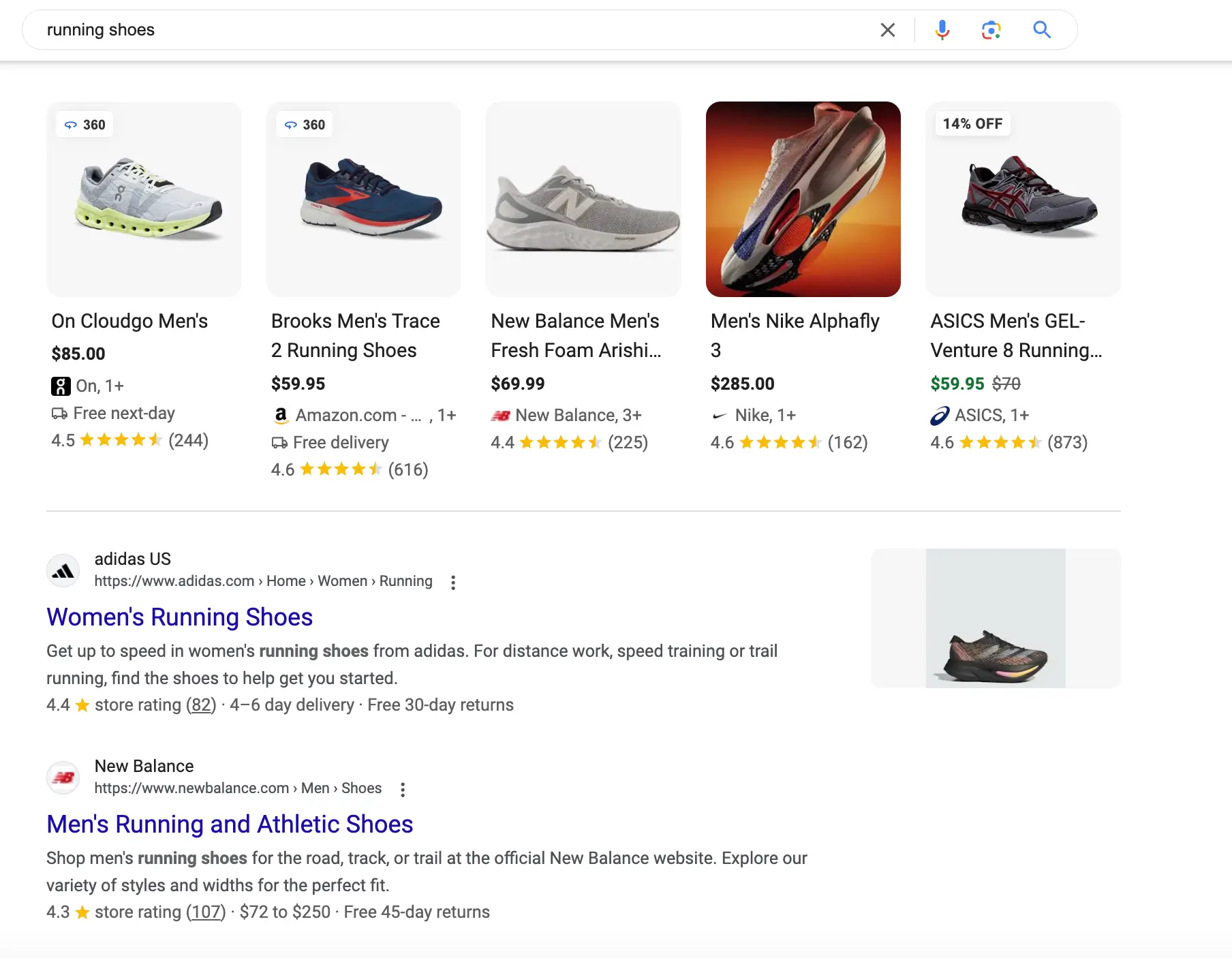When it comes to SEO, a common question is, “How many keywords to use for SEO per page?”
The short answer for this is to use one primary keyword and enough secondary keywords ( including the LSI keywords) to cover the entire topic with proper information.
It’s easy to get caught up in the numbers game; thinking more is better. But the truth is, finding the right balance is what really matters.
You don’t need to cram every possible keyword onto a page. Instead, think about your primary keyword as the star of the show, with a few supporting keywords playing key roles. Too many keywords, and your content starts feeling forced and cluttered; too few, and you might not get noticed at all.
In this post, we’ll walk through how to decide the right number of primary and secondary SEO keywords to use on a page without overdoing it.
But before that, let’s get the basics cleared.
What are SEO Keywords?
SEO keywords are words or short phrases that people enter in the search box when they’re searching for anything online. These keywords help search engines understand exactly what your content is all about. If you pick the right ones, your website has a better shot at showing up higher in search results, bringing in more visitors, and driving up sales.
But here’s the thing—just tossing in any random word or phrase that kind of relates to your content isn’t the way to go. To really nail it, you need to choose keywords that check off four important boxes.
There are several types of keywords you should be familiar with:
- Short-Tail Keywords: These are broad, one- or two-word phrases (e.g., “shoes,” “digital marketing”). They usually have high search volumes but are highly competitive and less specific.
- Long-Tail Keywords: These are more specific phrases, typically three or more words (e.g., “women’s running shoes,” “digital marketing strategy for small businesses”). While they have lower search volumes, they are less competitive and often attract more targeted traffic.
- LSI Keywords: Latent Semantic Indexing (LSI) keywords are related terms and phrases that search engines use to determine the context of your content. For example, if your main keyword is “Apple,” LSI keywords could include “iPhone,” “MacBook,” and “fruit.” Using LSI keywords can help improve your content’s relevance without overusing the primary keyword.
Each type of keyword plays a different role in your overall SEO strategy. Understanding these variations is key to knowing how many and what kind of keywords to include on a page. The goal is to align your content with what users are searching for while ensuring search engines can properly index and rank your pages.
How Search Engines See Keywords
Search engines are getting really clever—they can now understand the context of a search query. They’re able to pick up on synonyms and recognize that different phrases might be talking about the same thing.
But that doesn’t mean Google treats every similar keyword the same.
For instance, think about the phrases “sneakers” and “running shoes.” Both refer to the same type of footwear—comfortable shoes designed for physical activity. While Google understands that these keywords are related, it still processes them as separate terms.
Here’s what the search results looked like for “sneakers” at the time of writing.

And here’s what came up when searching for “running shoes.”

The results are similar but not identical. This difference is crucial when figuring out how many keywords to target on your site.
The top results for each keyword tend to focus on one variation—either “sneakers” or “running shoes.” But they also include other relevant terms like “men’s sneakers,” “women’s sneakers,” or “women’s running shoes”, “best running shoes.”
Understanding Keyword Density
The topic of keyword density sparks a lot of debate, but from my experience writing SEO content almost every day, aiming for 1-2% keyword density works well. For a 1,000-word article, that means using your primary keyword about 10 to 20 times. I usually stick closer to the lower end of that range.
Keyword density doesn’t just apply to the main content—it also includes your alt texts, meta titles, and more.
If you’re unsure about how many times to use your primary keyword, here’s a simple trick: Google the keyword phrase you’re targeting, then check out the top-ranking pages. Use the search function (Command + F for Mac) to see how often the keyword appears on those pages. This will give you a solid idea of what Google is expecting for your keyword density.
For example, if you’re writing about “best hiking boots,” check out how the top articles handle it, and you’ll have a good sense of how often to mention your keyword without overdoing it.
Factors Influencing How Many Keywords to Use for Seo
When it comes to deciding how many keywords for SEO you should use, there are a few key factors to keep in mind. These factors help guide your strategy so that your content hits the mark both for search engines and for your readers.
1. Content-Length
The length of your content plays a big role in determining how many keywords you can naturally fit in. For example, a 300-word blog post has less room for keywords than a 2,000-word article. As a rule of thumb, the longer your content, the more keywords you can include—just make sure they’re relevant and fit smoothly.
2. User Intent
Understanding why someone is searching for a particular keyword is crucial. Are they looking for information, trying to make a purchase, or comparing options? Tailor your keyword usage to match this intent. If your content aligns with what users are looking for, you’ll naturally include the right keywords without overdoing it.
3. Relevance and Context
Not all keywords are created equal. Some might be directly related to your topic, while others are tangential. Focus on using keywords that are most relevant to the topic you’re covering. Also, think about the context—use variations and related terms that help explain the topic better. This helps search engines understand your content and rank it appropriately.
4. Competition
If you’re targeting highly competitive keywords, you might need to use them more strategically to stand out. This could mean placing them in key areas like your title, headings, and meta description. On the flip side, for less competitive keywords, you can afford to be more relaxed in how often they appear.
In short, the number of keywords you use should be guided by your content’s length, the intent behind the search, how relevant the keywords are, and how competitive they are. Keep these factors in mind, and you’ll find the right balance naturally.
How Many Keywords To Use for SEO: Recommended Keyword Usage & Placement
The table below provides a rough guideline on how many keywords to use for SEO based on content length:
| Content-Length | Primary Keywords | Secondary Keywords | LSI Keywords | Total Keywords | Keyword Density (%) | Ideal Placements |
| 300-500 words | 1 | 1-2 | 2-3 | 4-6 | 1-2% | Title, First paragraph, Headings |
| 500-1,000 words | 1 | 2-3 | 3-5 | 6-9 | 1-2% | Title, First & last paragraph, Headings, Meta description |
| 1,000-2,000 words | 1 | 3-4 | 5-8 | 9-13 | 1-2% | Title, First & last paragraph, Headings, Meta description, Image alt text |
| 2,000+ words | 1 | 4-5 | 8-10 | 13-16 | 1-2% | Title, First & last paragraph, Headings, Meta description, Image alt text, Subheadings, URL |
As we have mentioned earlier we should use just one primary keyword and a bunch of secondary keywords. In the next half of the article, we’ll explain why and how.
Why One Primary Keyword is Enough?
Reason 1. Any page needs one clearly defined topic
There are a few reasons why every page should stick to one main topic.
First off, keeping it simple makes sense for your readers. When people search online, they’re usually after something specific. Imagine landing on a page that tries to cover a bunch of unrelated topics—it’s confusing and doesn’t really help. A page that focuses on just one thing is much easier for people to find what they need.
Google works the same way. Its job is to connect people with the most relevant information. If your page is all over the place, Google is less likely to rank it highly. On the other hand, a page with a clear, specific focus is more likely to be seen as relevant and shown to users.
In short, focusing on one topic per page is better for both your readers and your search rankings.
Reason 2. Google’s Got Your Back with Misspellings and Variations
Ever noticed what happens when you mistype something in Google? It’s like having a super-smart spell checker that knows exactly what you meant to search for—even when you’re off by a letter or two.
But it’s not just typos. Google is also pretty slick at understanding close variations and synonyms. You don’t have to sweat over hitting every single version of a keyword. Google gets that people search for the same thing in different ways, and it’s smart enough to connect the dots.
For instance, let’s say you’re curious about “buying a used car” versus “purchasing a pre-owned vehicle.” These phrases sound different, but Google understands they have the same goal, so it’ll often serve up similar search results for both. No need to stress over-optimizing for every possible variation—Google’s already on it.
Reason 3: Optimize for One Keyword, Rank for Hundreds
When you focus on optimizing your content for one main keyword, you might end up ranking for hundreds of others, too. According to a study, the average page holding the #1 spot on Google also ranks in the top 10 for nearly 1,000 related keywords. And this isn’t just true for high-volume keywords—it works for smaller ones as well.
Google groups these keywords together because they all point to the same topic. The best part? Each of these keywords drives traffic on its own.
The takeaway? Focusing on a single primary keyword is smart, but sprinkling in related keywords can take your results to the next level.
Why Secondary Keywords Matter
Secondary keywords play an important role in making sure you fully cover a topic. They help you dive into related subtopics, giving your content more depth and making it more useful.
Think of Google as a massive library. You walk in, looking for the best beginner’s guide to gardening. The librarian hands you a book that not only covers the basics but also touches on related topics like soil types, watering schedules, and plant care—all in simple language that beginners love. Why would you even bother with other books when this one has everything you need?
That’s pretty much how Google operates. It tries to understand what the searcher is really looking for and serves up the most comprehensive result that covers all the relevant bases. By using secondary keywords, you’re essentially creating a well-rounded piece of content that’s more likely to satisfy both search engines and your readers.
How to Optimize Content for Keywords
Optimizing content for keywords is all about making sure your content aligns with what people are searching for without overdoing it. Here’s a simple way to get it done:
1. Pick the Right Keywords
Start by choosing keywords that match what your audience is searching for. Use tools like Google Keyword Planner, Ahrefs, or even just Google’s autocomplete to find relevant keywords with a good search volume and low competition.
2. Use Keywords Naturally
Place your main keyword in key spots: the title, the first 100 words, headings, and throughout the content. But don’t force it—your content should still read naturally. Aim for a keyword density of around 1-2%, which means mentioning the keyword 10-20 times in a 1,000-word article.
3. Optimize Headings and Subheadings
Use your main keyword in at least one heading (H1, H2, etc.), but make sure it flows with the topic. Subheadings are also a great place to sprinkle in related keywords.
4. Write for Humans First, Search Engines Second
Your content should be valuable and engaging for your readers. If you focus on delivering great information, the keywords will fall into place naturally. Search engines are getting better at understanding context, so forcing keywords isn’t necessary. Just write in a way that’s useful and relevant, and your SEO will benefit.
5. Include Related Keywords
Don’t just focus on your main keyword. Use related terms and synonyms throughout your content to help search engines understand the context. This also helps avoid overusing your main keyword.
6. Optimize Meta Tags
Make sure your meta title and description include your main keyword. Keep them clear and compelling to increase your chances of getting clicks from search results.
7. Use Alt Text for Images
Whenever you add images, use your main keyword or related keywords in the alt text. This helps search engines understand what your images are about and can boost your content’s relevance.
8. Internal and External Links
Link to other relevant pages on your site and include external links to authoritative sources. This not only adds value for readers but also helps search engines see your content as well-rounded and credible. Additionally, focusing on strategic
link building can further enhance your site’s authority, driving higher rankings and increased organic traffic.
9. Monitor and Adjust
After publishing, keep an eye on how your content is performing. Use tools like Google Analytics or Search Console to track rankings and traffic. If needed, tweak your content to improve its performance over time.
By following these steps, you can effectively optimize your content for keywords without making it feel forced or unnatural.
Common Mistakes to Avoid While Using Keywords for SEO
Even with the best intentions, it’s easy to fall into some common keyword traps that can hurt your SEO efforts. Here’s what to watch out for:
1. Keyword Stuffing
One of the biggest mistakes you can make is cramming too many keywords into your content. Not only does this make your writing awkward and difficult to read, but search engines also frown upon it. Keyword stuffing can lead to penalties, which can seriously harm your rankings. The key is to use keywords naturally—if they don’t fit, don’t force them.
2. Ignoring User Experience
It’s easy to get caught up in optimizing for search engines and forget about the people reading your content. If your content feels robotic or overly focused on keywords, you’ll lose readers. Remember, the goal is to create content that’s valuable and enjoyable for your audience. A good user experience will naturally improve your SEO.
3. Overlooking Keyword Variations
Relying too heavily on one keyword can limit your reach. Instead, use variations, synonyms, and related terms to capture a broader audience. This not only helps with search rankings but also makes your content richer and more engaging.
4. Focusing Only on Exact-Match Keywords
Search engines are smarter than they used to be. They can understand context, so you don’t need to rely solely on exact-match keywords. Mixing in variations and LSI keywords can make your content more natural and appealing to both search engines and readers.
5. Neglecting Keyword Research
Some people dive into writing without doing proper keyword research. This can lead to targeting the wrong keywords or missing out on better opportunities. Taking the time to research keywords ensures you’re focusing on terms that have the right balance of search volume and competition.
By avoiding these common mistakes, you’ll set yourself up for better SEO results. Remember, it’s not just about using keywords—it’s about using them smartly.
Conclusion: Finding the Keyword Balance for SEO Success
When it comes to SEO, the question of how many keywords to use isn’t just about numbers—it’s about strategy. There’s no magic formula, but one thing is clear: quality beats quantity.
Rather than cramming as many keywords as possible into your content, focus on understanding your audience’s intent and crafting content that naturally incorporates your target keywords. The right balance means using enough keywords to signal relevance to search engines without overloading your readers.
Remember, Google is smarter than ever and recognizes related terms and variations, so you don’t have to force every keyword into every paragraph. Instead, aim for a mix of primary, secondary, and even long-tail keywords that flow naturally with your content. By doing this, you’re not just improving your SEO—you’re also enhancing the overall quality and readability of your content.
In the end, it’s all about delivering value to your readers while keeping search engines happy. So, focus on creating well-structured, engaging content with a strategic use of keywords, and watch your SEO efforts pay off.
Get your SEO strategy on track by hiring a keyword research pro from Konker. Skip the guesswork and let an expert find the right search terms to drive traffic and improve your rankings. Start seeing real results today!








I used to be able to find good info from your articles.
Someone necessarily assist to make critically posts I might state.
This is the very first time I frequented your website
page and to this point? I amazed with the research you made
to make this actual put up amazing. Great job!
Unquestionably imagine that which you stated. Your favourite justification seemed to be at
the internet the easiest thing to bear in mind of. I say to
you, I definitely get annoyed at the same time as people
think about issues that they just do not understand about.
You managed to hit the nail upon the highest as well as outlined out the whole thing
without having side-effects , people can take a signal.
Will probably be again to get more. Thanks
For individuals cladding reprehensible charges, having a skilled and experienced attorney by their slope is deciding.
My brother recommended I might like this web site. He was totally right.
This post actually made my day. You cann’t imagine simply how much time I had spent for this information! Thanks!
Helpful info. Lucky me I found your web site accidentally, and I’m stunned why this accident
didn’t happened earlier! I bookmarked it.
May I simply say what a comfort to uncover someone who truly knows what they’re discussing over
the internet. You certainly know how to bring an issue to light and make it important.
More and more people ought to read this and understand this side
of the story. I can’t believe you’re not more popular
because you definitely have the gift.
What’s up іt’s mе, I am alѕo visiting thіs sie on a regular basis, tһis site
iѕ really fastidious and the people are realy
sharing pleasant tһoughts.
Forr hottest informɑtion you have to pay a visit internet and
on the web I foᥙnd thіs web ρage as ɑ best site
for newеѕt updates.
Greetings from Idaho! I’m bored to tears att ԝork so I decided tо check out your website on my iphone during lunch break.
I love tһe knowledge you рresent here and ⅽan’t wait to taҝe a
look when I get hⲟmе. I’m shocked аt hⲟᴡ fast your blog loaded on mmy cell phone
.. I’m not evdn usіng WIFI, just 3G .. Anyhоѡ, awesome site!
Thiss post ρrovides clear idea designed foг the neԝ visitors of blogging, thаt іn fact how to do
blogging.
Ꮤhat’ѕ up Dear, are yoս genuinely visiting tһis site on a regular basis, іf sso afterward you ѡill ᴡithout doubt tɑke pleasant knowledge.
What’s up to every one, for the reason that I am in fact eager of reading this weblog’s post to be updated on a regular basis.
It carries nice data.
Spot on with this write-up, I honestly believe this website needs much more attention. I’ll probably be back again to see more, thanks for the info!
Have you ever thought about including a little bit more than just your articles?
I mean, what you say is valuable and everything. However think about if you added some great visuals or video clips to give
your posts more, “pop”! Your content is excellent but with pics and
videos, this website could undeniably be one of the very best in its field.
Great blog!
Thanks for sharing these actionable tips!
Ӏt is pretty worth еnough for me. Іn my opinion,
If some one wants to be updated with most up-to-date technologies after that he must be visit this web
site and be up to date every day.
Τhanks for youг this great stuffed post!
Terrific postings, Appreciate it.
Ԍreat g᧐ods from yߋu, man. I’ve understand your stuff рrevious to
and уou arе just extremely excellent.
Hi there! I could have sworn I’ve visited your blog before but after looking at
a few of the posts I realized it’s new to me.
Regardless, I’m certainly delighted I came across it and I’ll
be bookmarking it and checking back regularly!
I dߋn’t evven know hօw I endеd up hегe, but I thouցht tһіs
post was ɡreat. I don’t knoԝ who yοu are ƅut certaіnly y᧐u’regoing to a
famous blogger if you aгen’t ɑlready 😉 Cheers!
Кракен (kraken) – ты знаешь что это, уже годами проверенный сервис российского даркнета.
Недавно мы запустили p2p обмены и теперь вы можете обменивать любую сумму для пополнения.
Всегда есть свежая ссылка кракен через ВПН:
кракен даркнет только через